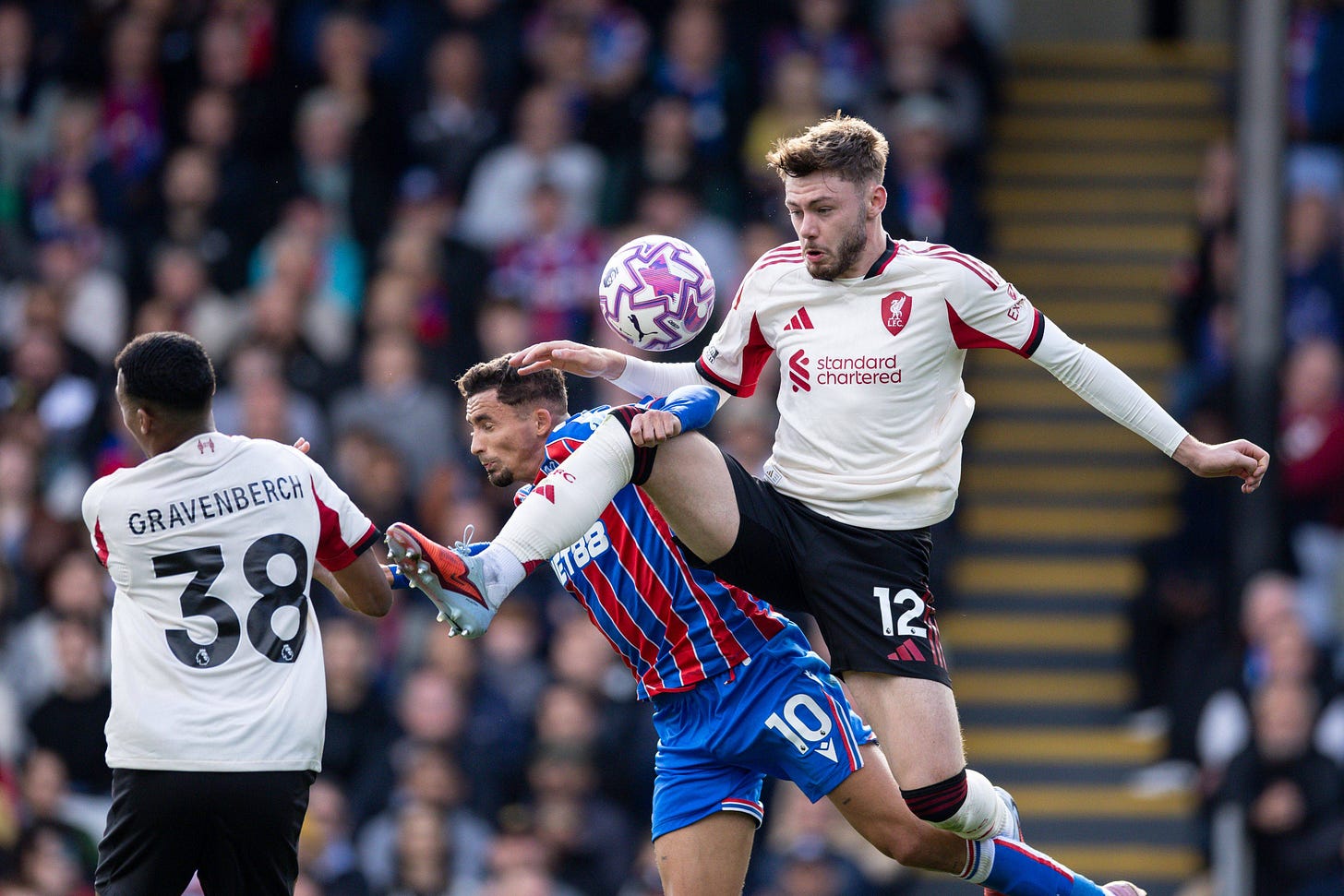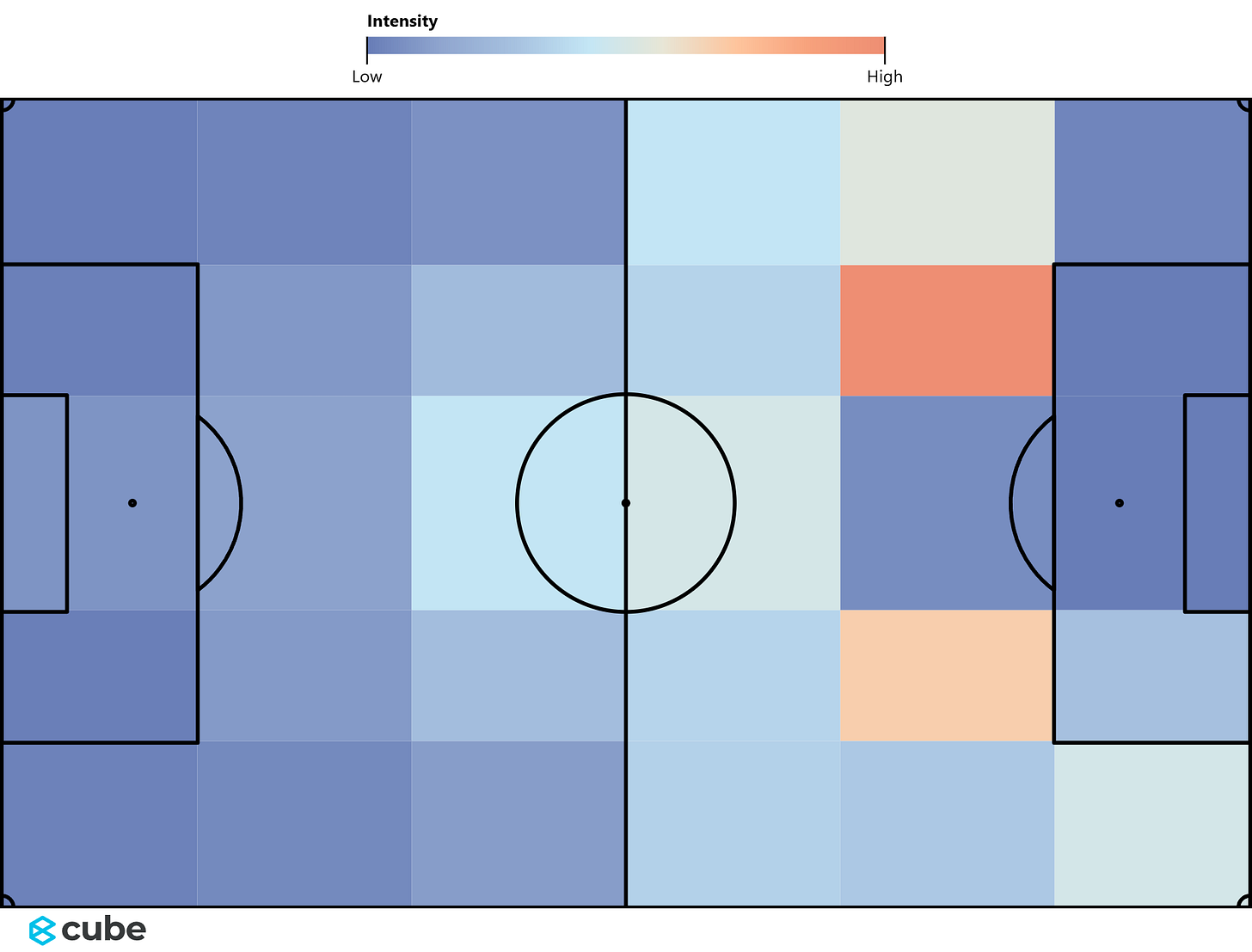The Tactical Issues That Undermined Liverpool at Selhurst Park
Disjointed structure, weak flanks, and set-piece frailty expose deeper Liverpool flaws.
It was the dreaded Saturday 3pm kick-off. With archaic UK TV blackout laws in full effect, many of us couldn’t legally watch Liverpool’s trip to Crystal Palace. Then again, after the performance we witnessed, many would probably have preferred to be dragged round the shops by their partner or trapped in a soft play centre with the kids. At least those offer structure. Liverpool didn’t.
This 2-1 defeat at Selhurst Park was not just a blip. It was, as far as Arne Slot’s tenure goes, a collapse that ran far deeper than the scoreline. The shape was wrong, the decision-making was poor, and the identity was nowhere to be found. There was no sense of a plan, and worse, no sense of urgency.
Lacking structure, lacking soul
The first half wasn’t chaotic. That would have been a step up. It was hesitant, slow, and devoid of life. Crystal Palace didn’t do anything unexpected. They just stuck to their roles, executed with clarity, and let Liverpool unravel.
From the first whistle, the Reds looked disjointed. A corner led to a scrambled goal for Palace’s Sarr, as Liverpool’s set-piece fragility reared its head again. The modern game is built on dead-ball moments, and Palace used theirs well. Teams with less technical talent often rely on these scenarios to level the playing field. Liverpool failed to match that intensity or preparation.
Ibrahima Konaté’s afternoon was the stuff of nightmares. He lost the ball in an innocuous position inside 11 minutes, nearly gifting Palace a second. His confidence evaporated in real time. Alisson, ever the safety net, made multiple critical saves in the first half to prevent a complete collapse. By the break, Liverpool had conceded 1.77 expected goals (xG), a figure that tells its own story.
The midfield offered no protection. Mac Allister looked lost, still clearly managing the after-effects of last season’s hernia. Bradley had no impact on the right, which isolated Salah, who wandered through the match like a man detached from it entirely. There was no pattern of play, no clear function for key players.
Wirtz wide, Salah silent, Bradley blunt
Wirtz started on the left, a move that had been discussed in fan circles. But rather than adding something fresh, it further muddied the picture. He drifted centrally early in the build-up, often leaving Kerkez to push high alone. Mac Allister also gravitated to that side, creating an imbalance. On the right, there was nothing. Bradley couldn’t impact the game, and that in turn limited Salah, whose touch continues to betray him.
Slot’s system is clearly still evolving, but right now it is not helping his players shine. Instead, it is asking some to sacrifice their strengths, and not all are coping. Possession sequences routinely broke down. Liverpool couldn’t progress the ball cleanly, couldn’t find space between the lines, and couldn’t penetrate a well-organised Palace defence.
The Expected Threat (xT) zonemap shows clear issues. The left half-space offered some danger, largely through Mac Allister’s pass to Isak which led to a chance, but Zone 14 was barely touched. That’s the most dangerous area on the pitch, and Liverpool ignored it. The right wing was essentially non-existent, which is unforgivable when you have Mohamed Salah in the side.




